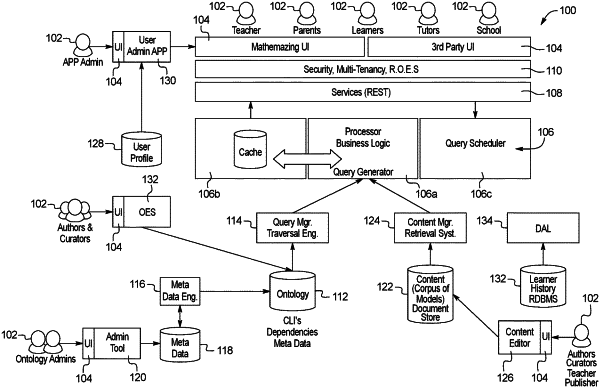| CPC G09B 19/025 (2013.01) [G09B 5/00 (2013.01); G09B 7/00 (2013.01); G09B 19/00 (2013.01)] | 19 Claims |

|
1. A system for automatically distilling concepts from problems and dynamically constructing and testing the creation of problems from a collection of concepts comprising:
one or more databases storing a plurality of concept line items (CLIs), wherein each CLI is an expression of a concept, and a set of interrelationships between each pair of CLIs, wherein the plurality of CLIs includes a minimum of 549 CLIs; and
a processor in communication with the one or more databases, the processor including memory storing computer executable instructions such that, when the instructions are executed by the processor, they cause the processor to perform the steps of:
a) providing a user interface to a user through which the user interacts with the system;
b) receiving, as input, one or more of a sensory input, an expression, a math concept, a user data packet (UDP), wherein the UDP is a collection of attributes, properties, and variables that describe a skill set;
c) analyzing the input in relation to each of the 549 CLIs and the set of interrelationships to identify which CLIs to use in dynamically constructing and testing problems;
d) extracting and compiling a concept cloud of one or more of the plurality of CLIs where each of the CLIs to be used in dynamically constructing and testing problems is included in the concept cloud and each of the CLIs not to be used in dynamically constructing and testing problems is not included in the concept cloud;
e) generating one or more problem building blocks from the concept cloud CLIs;
f) applying a rules engine to the one or more problem building blocks to build one or more problems;
g) returning to the user, through the user interface, the one or more problems built from the CLIs that define the concept cloud extracted from the input;
h) receiving from the user, through the user interface, responses to the one or more problems; and
i) iteratively one or more times, repeating steps (c)-(g) within a dynamic diagnostic exam process.
|